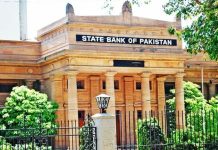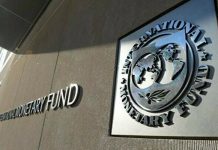ISLAMABAD: Pakistan’s GDP grew by 2.13% in the first quarter of FY2023-24, a significant improvement from 0.96% in the same quarter of the previous year, according to reports, which cited data from the Pakistan Bureau of Statistics (PBS).
In the first quarter of FY24, the agriculture sector showed a remarkable growth of 5.06%, while the industry and services sectors achieved growth rates of 2.48% and 0.82%, respectively.
The crops displayed a strong increase of 6.13%, with a particularly outstanding 11.16% growth in important crops.
The main factor behind the growth in important crops was the rise in sowing area compared to the last year. For example, the sowing area for rice, cotton and maize grew by 21%, 11%, and 5%, respectively. It dropped by 11% for sugarcane, but this was compensated by the other three major crops,” the statement added.
“The growth of 2.13% in the Financial Year 2023-24 is a positive sign for Pakistan’s economy, indicating a notable recovery from the challenges faced in the previous fiscal year. The growth is especially encouraging in light of the COVID-19 pandemic’s ongoing impact on global economies,” Ali Kemal, Chief Economist at the SDG Support Unit, Ministry of Planning Development and Special Initiatives, told media.
This positive data reflects the resilience and adaptability of Pakistan’s agricultural sector, which has overcome challenges and seized opportunities to contribute significantly to the overall economic growth. The increased production in key crops will not only support food security but also boost the export potential, contributing positively to the country’s balance of payments.
The industrial sector’s growth of 2.48% and services sector’s growth of 0.82% further highlight the comprehensive nature of Pakistan’s economic recovery. These positive indicators suggest a diversified and balanced growth pattern, promising well for sustained economic development in the coming quarters.
However, while the industrial sector’s growth is admirable, it is essential to examine the specific sub-sectors driving this growth. Identifying areas of high growth can inform policymakers about the sectors that need targeted support for sustained development.
“To sustain and build on this positive momentum, it is imperative for the government to continue implementing the policies that foster economic diversification, innovation, and investment. Addressing any bottlenecks in the supply chain and ensuring a conducive business environment will be instrumental in promoting further growth across sectors,” said Kemal. –INP






